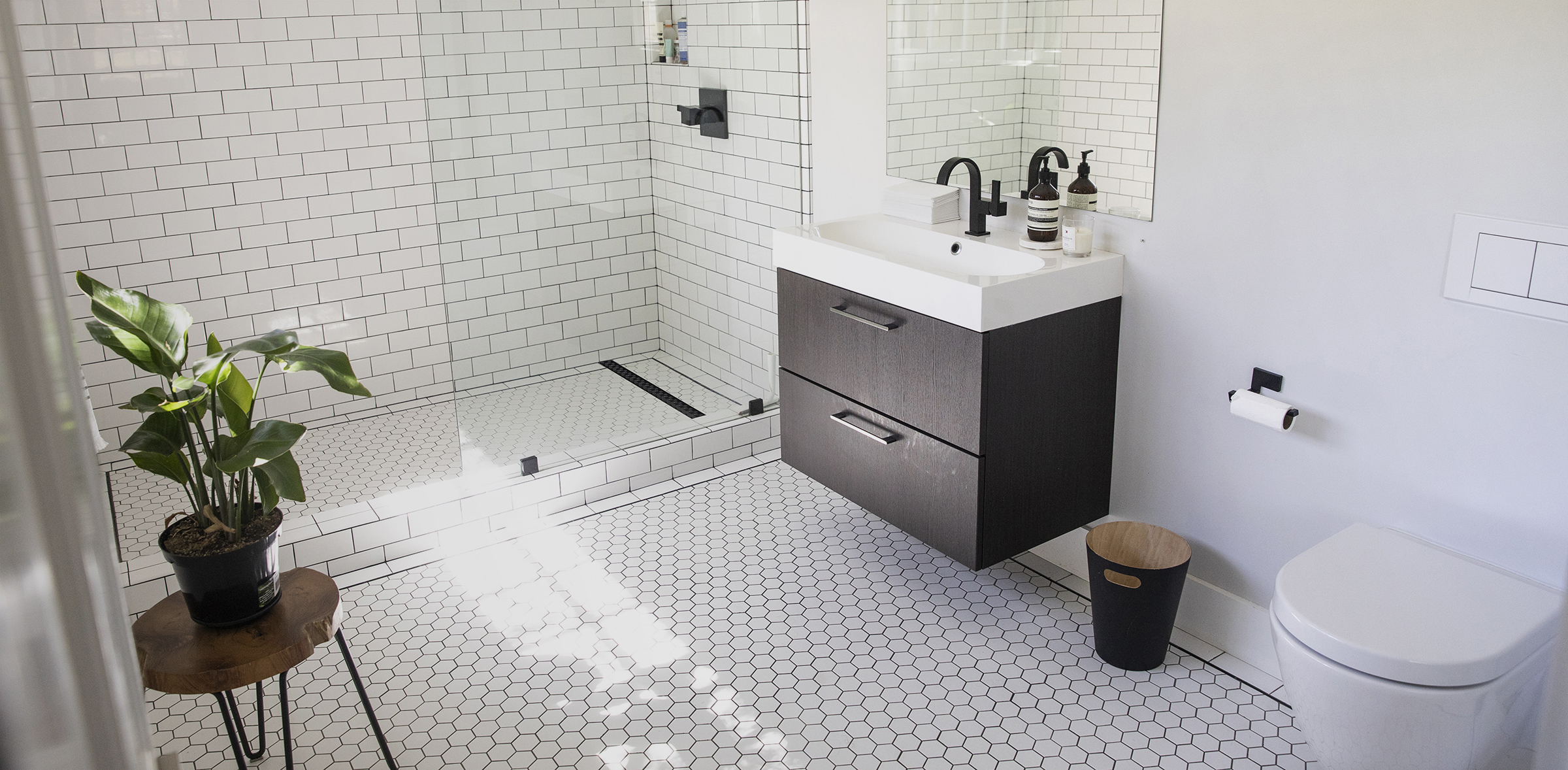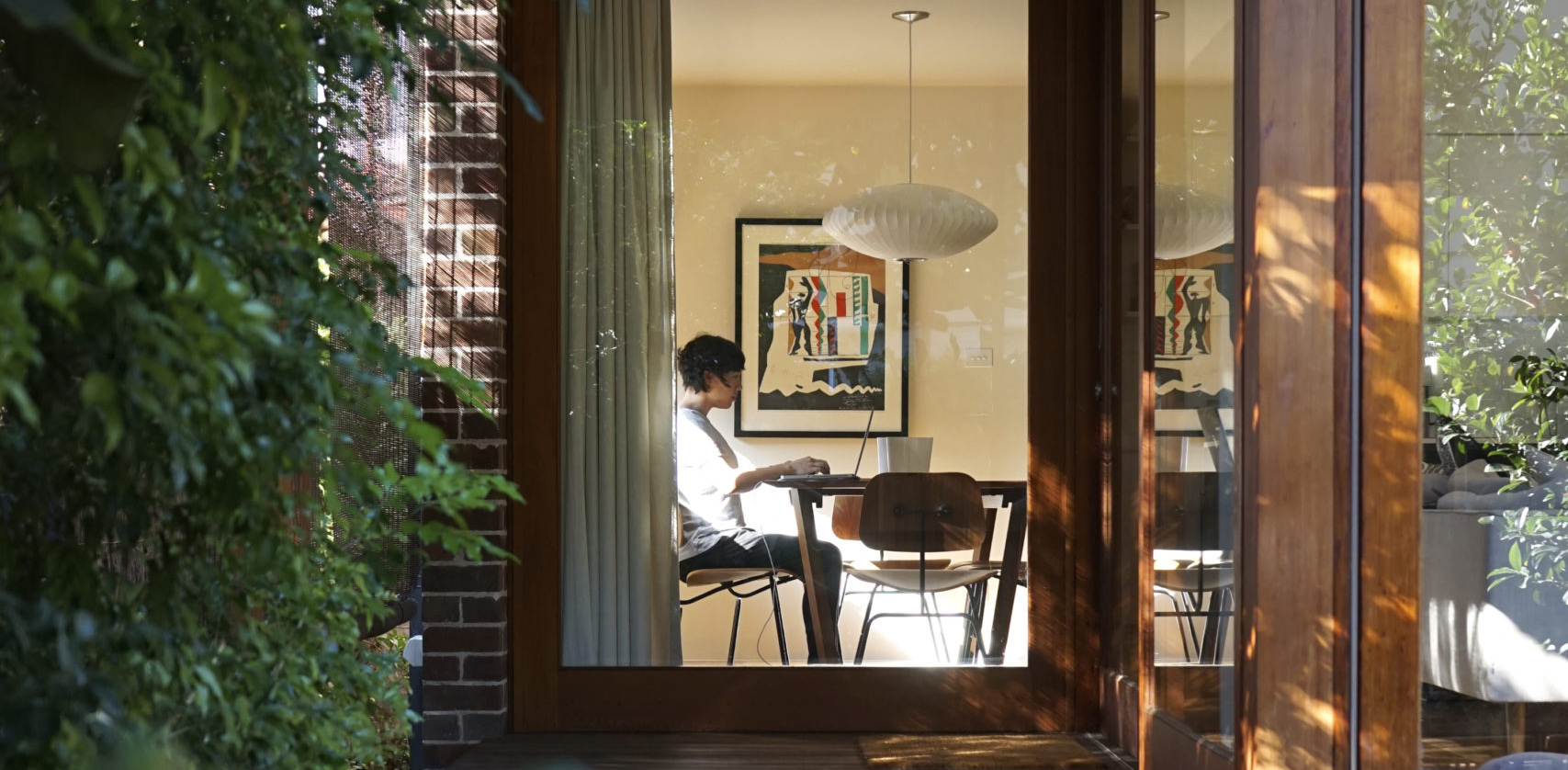The latest edition of “Architizer: The World’s Best Architecture” — a stunning, hardbound book celebrating the most inspiring contemporary architecture from around the globe — is now shipping! Secure your copy today.
In architectural design, if “god is in the details”, then the details are in material transitions. The way different material assemblies come together is paramount in determining how a space conveys a particular feeling or mood. As a result, designers typically aim to create seamless material transitions instead of jarring ones. This notion is perhaps most apparent when designing modern, minimalist bathrooms for residential or hospitality settings.
People often want their bathrooms to impart feelings of calmness and wholeness, but because wet and dry uses require fundamentally different assemblies, striking material delineations are often needed right where they’re least desirable. Three small but impactful design details that can erase these delineations are wall drains, curbless showers, and tile-in drain covers.
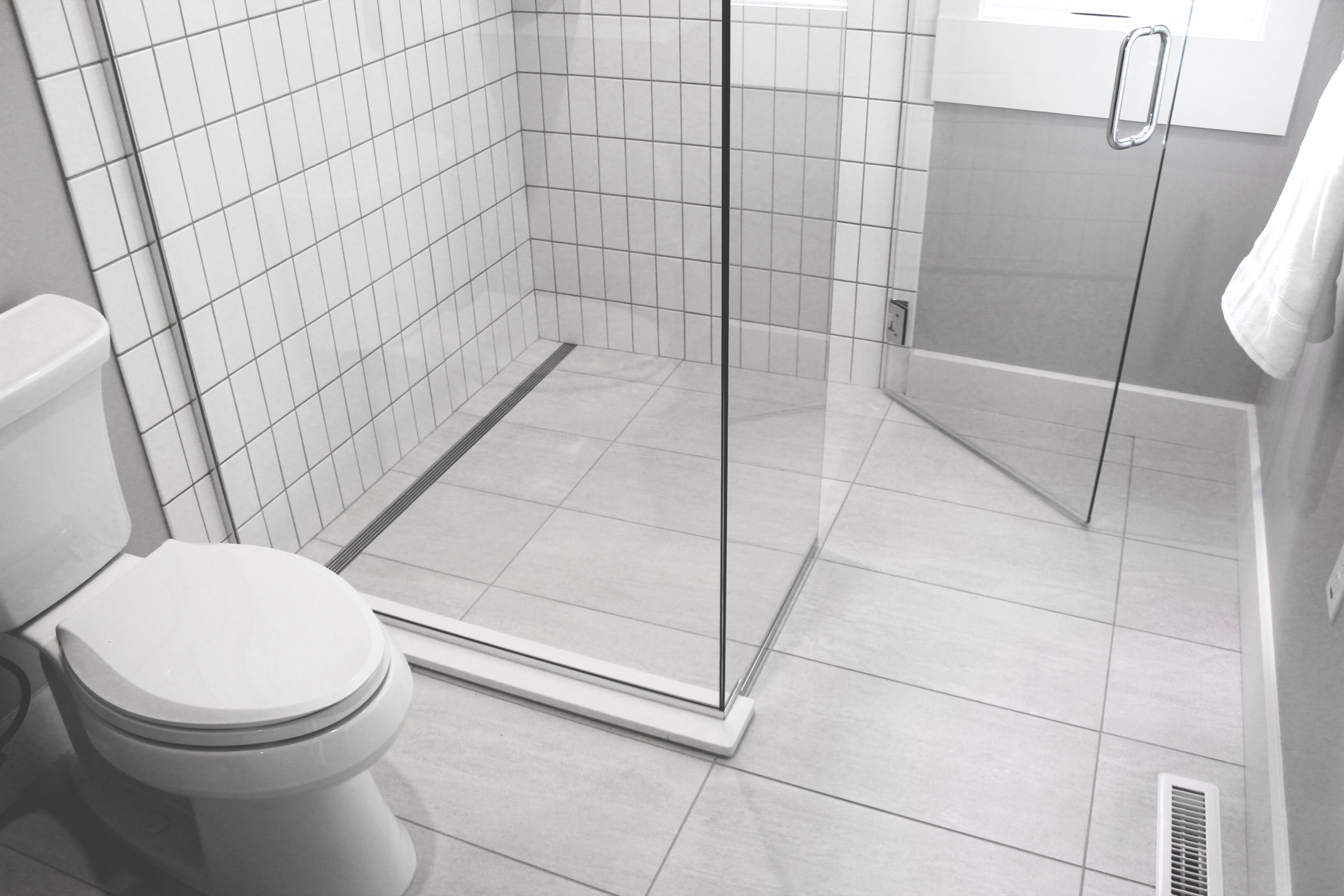
An example of a curbless shower featuring QuickDrain’s ShowerLine linear shower drain; image courtesy QuickDrain
The ultimate seamless detail in bathroom design is to entirely eliminate the need for a floor drain by specifying a drain inside the shower’s wall, such as QuickDrain’s WallDrain. Using a wall drain allows the shower floor to be left completely free of material transitions because the drain is concealed behind the shower’s back or side wall. As a result, the only visible component of a wall drain is a thin slit at the base of the wall the floor is sloped towards.
This low-profile opening is accomplished by placing a pair of standoff feet at each end of the drain cover, which runs from wall to wall and attaches to the drain body with magnets, which allows for easy removal and cleaning. This detail leaves a barely noticeable, 3/8” reveal that accepts all runoff from the shower. Despite the small size of this reveal, QuickDrain’s WallDrain has a drainage rate of 12 gallons per minute, although this rate is ultimately determined by the size of a building’s plumbing lines.
A curbless shower is arguably the most impactful seamless detail that can be used in bathroom design because it simplifies material transitions in several ways. Without a shower curb, a consistent floor level can be maintained between the shower and the rest of the bathroom. This also allows the bathroom floor tile to run into and through the shower if a linear drain is specified.
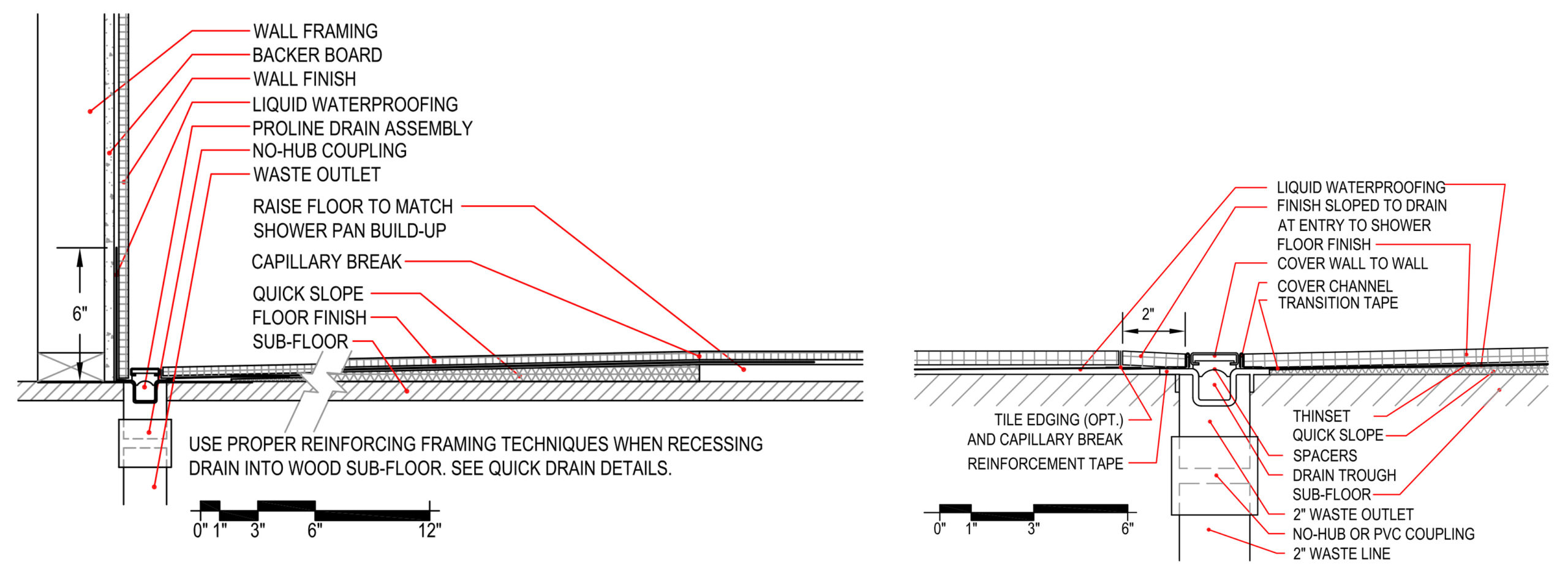
Comparison of curbless shower construction with linear shower drain placed at back of shower (left) and at shower entry (right), courtesy of QuickDrain
Creating a single slope in the shower by using a linear drain is key to running the same floor tile from the bathroom into the shower. This is because using a traditional point drain requires a multi-directional slope with a transition to small-format tiles to accommodate its seams, while large-format bathroom floor tiles can run onto a single slope. A single slope can be accomplished using a linear shower drain, such as QuickDrain’s ShowerLine or ProLine, placed across the entry or at the back wall of the shower.
If a linear drain is used at the shower’s entrance, the slope can be built up from the back of the shower without a recessed sub-floor. Placing a drain at the back of the shower requires either recessing the shower’s sub-floor or raising the floor throughout the rest of the bathroom to create a slope. However, placing a linear drain at the back of the shower results in a higher drainage rate of 10-12 gallons per minute as opposed to 5 if the drain is placed at the entry.
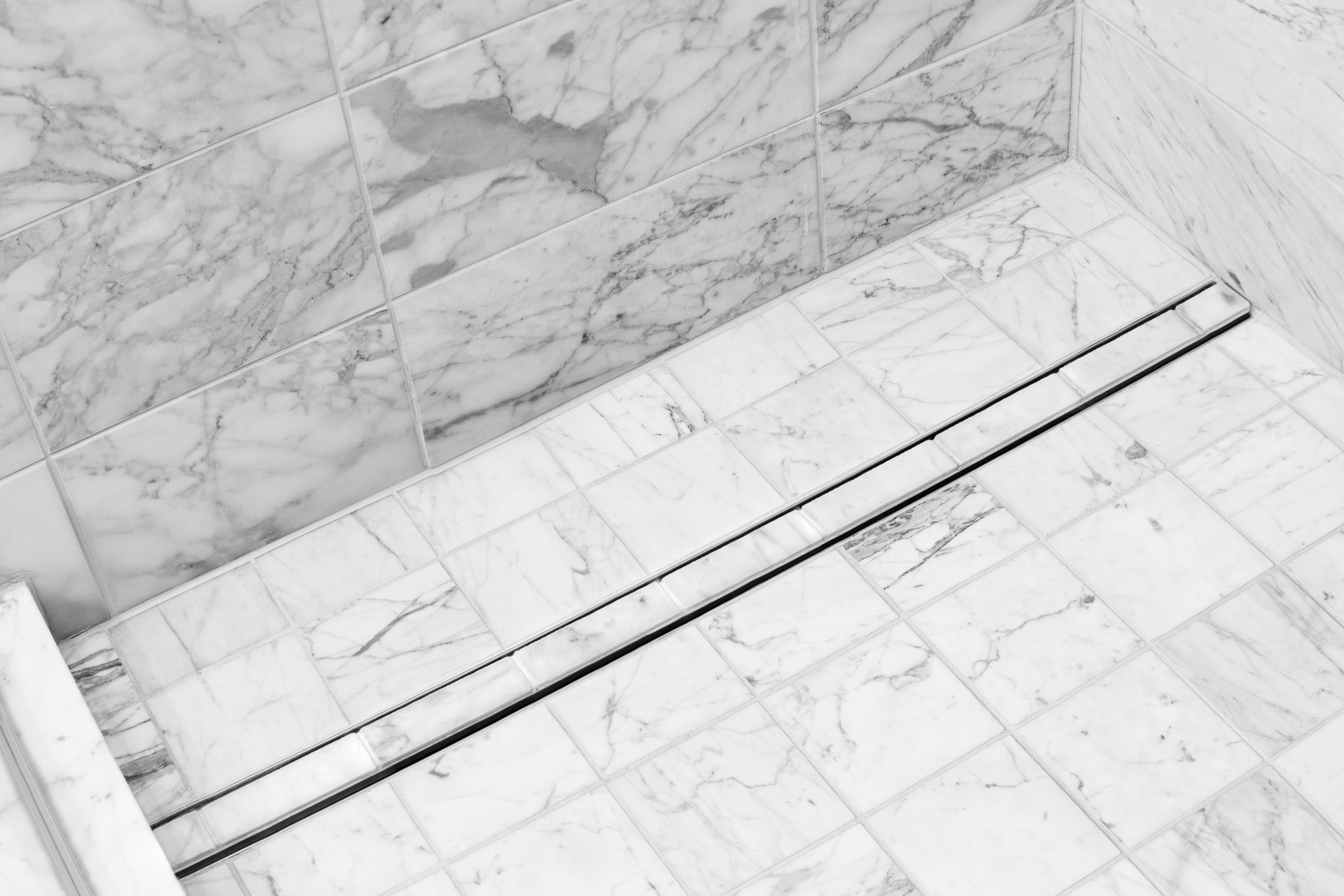
Quickdrain Showerline at the Ritz Carlton in Cleveland; image courtesy Quickdrain
A tile-in drain cover is a small detail that goes a long way in promoting a seamless aesthetic. Designed just like its name suggests, a tile-in drain cover uses the same tile as the shower floor (and the bathroom floor if using a linear drain) to act as a cover for the shower drain. This detail allows the shower drain, often a focal point on the floor, to blend in with its surroundings. A tile-in drain is most easily achieved using a linear shower drain, since the relatively thin slits needed for drainage at its sides leave room for any finish material to be inserted as a cover for the drain body.
While QuickDrain’s ShowerLine drain accepts a variety of decorative metal inserts depending on the preferred aesthetic, their tile-in drain cover is the most effective at making shower floor drains appear to disappear. In cases where using a point drain can’t be avoided, QuickDrain also offers a square drain with a tile-in option that functions in essentially the same way, draining through slits on four sides as opposed to two.
When aiming to design sleek, seamless bathroom details, it’s important to focus on reducing or eliminating material transitions. Wall drains, curbless shower entries, and tile-in drain covers are three simple ways to do so.
For more information on these solutions, check out QuickDrain’s full line of products, or reach out to one of their helpful specialists.
The latest edition of “Architizer: The World’s Best Architecture” — a stunning, hardbound book celebrating the most inspiring contemporary architecture from around the globe — is now shipping! Secure your copy today.
